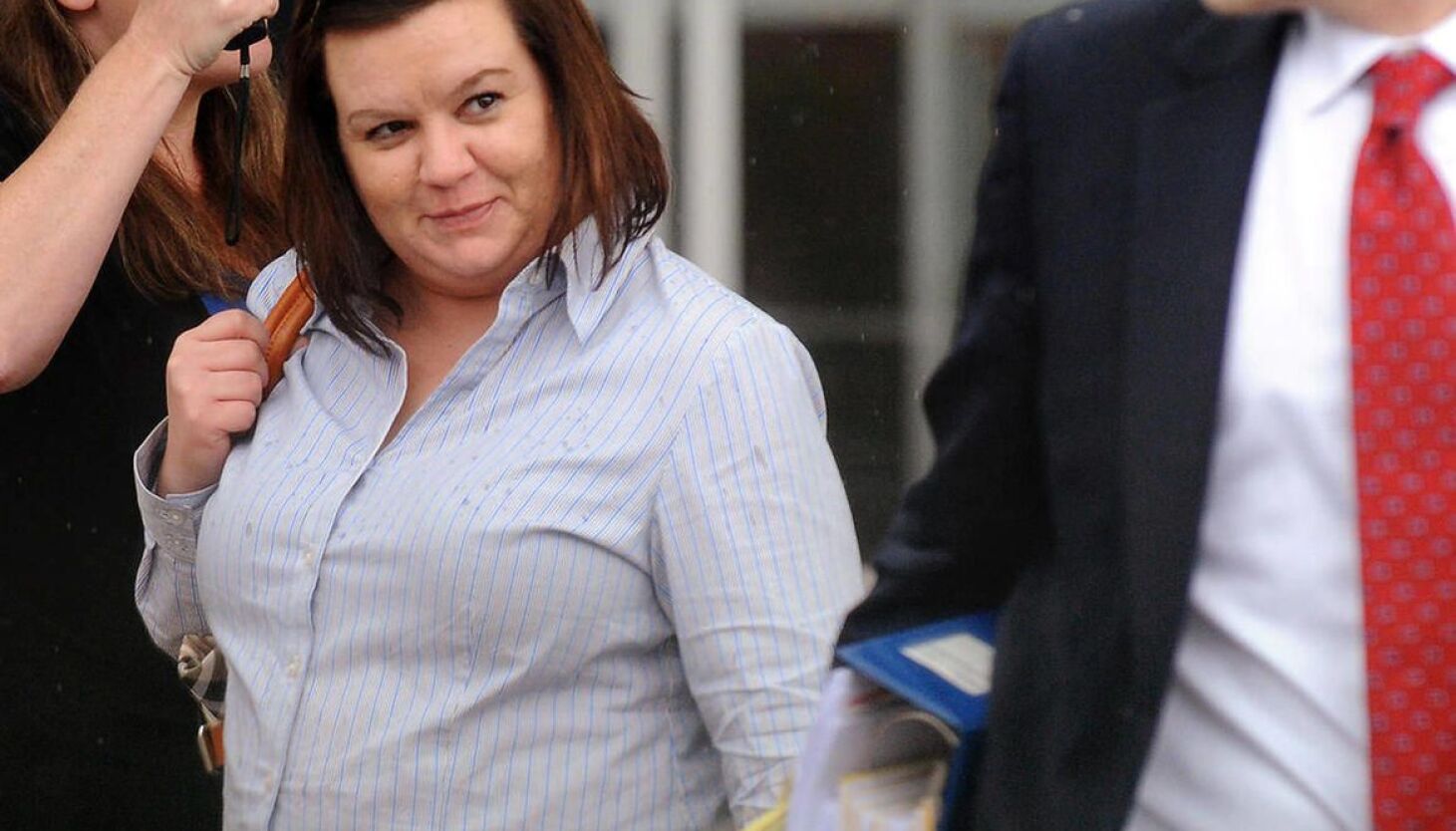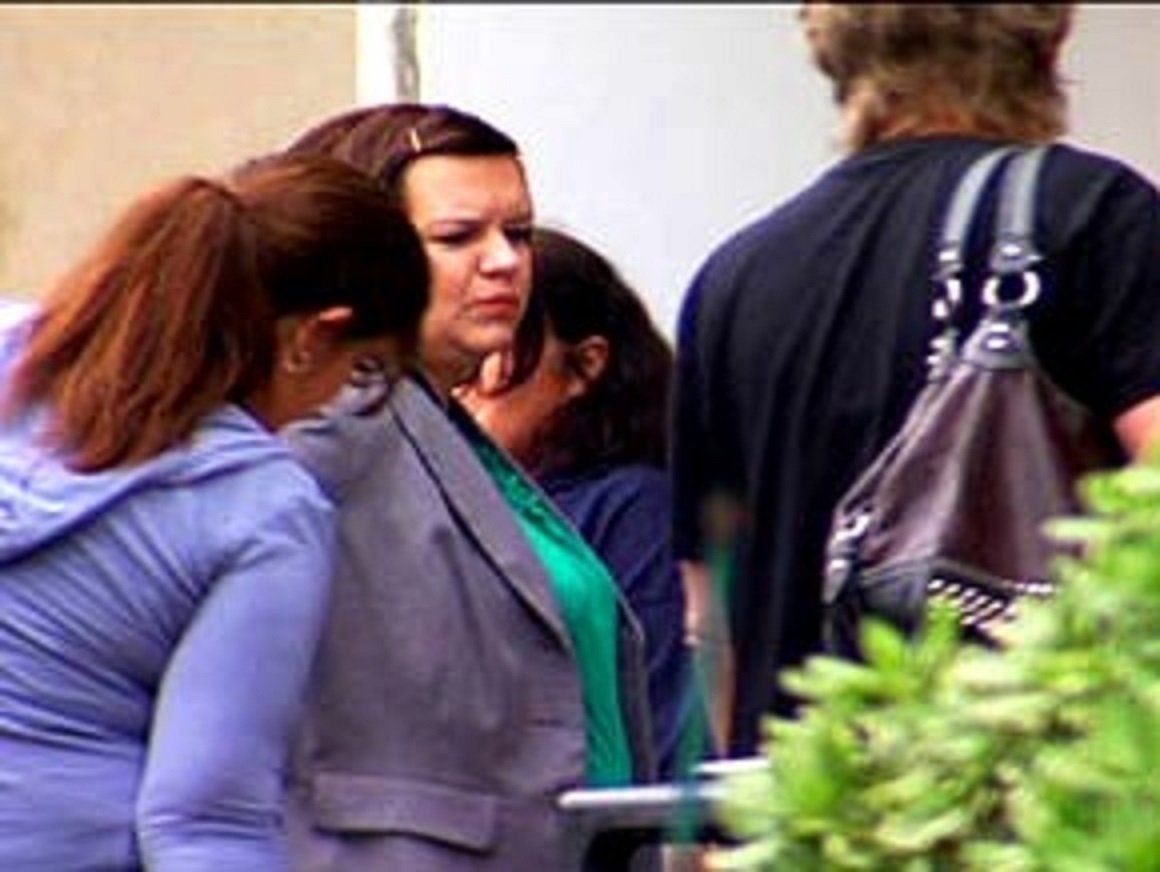Warning: Graphic content, readers’ discretion advised. This article contains a recollection of crime and can be triggering to some readers discretion advised.
When patients visited the DaVita clinic in Lufkin ,Texas ,they were expting to receive a life-saving dialysis treatments to help with their helth conditions Instead , many of them were preyed upon by the very person who was supposed to be helping them . How were they to know their nurse was actually a serial killer?
Saenz was born in Fall River, Massachusetts was born as Kimberly Fowler. Kim attended Central ISD in Pollok, Texas (suburb of Lufkin Texas) for at least her junior high and high and high school years. She was a cheerleader in junior high and part of high school.
Her junior year of high school, she learned she was pregnant by her high school boy friend and gave birth to her son her junior year of high school. This ended Kim’s high school career as she left Central High School after the birth of her son. Kimberly eventually earned her high school diploma or equivalency of and went to Angelina College in Lufkin, Texas and earned her licensed vocational nursing license. She was hired as a nurse at a DaVita dialysis clinic.

She was hired despite a checkered employment history: at the time, she had been fired at least four times from healthcare jobs. One such firing came when her bosses at Woodland Heights Hospital caught her stealing Demerol (which was found in her handbag) and cheating on a urine test.
Saenz was married with two young children. She suffered from drug dependence and used stolen prescription medication. She had been arrested for public intoxication and criminal trespass after a 2007 domestic disturbance with her husband, though the two later reconciled
In the spring of 2008, DaVita’s Lufkin clinic had an unusual spike in patients falling seriously ill during treatment. Paramedics were called to the clinic 30 times in April – double the number of calls in the past year. One patient, Thelma Metcalf, had to go to the emergency room several times due to getting too much heparin blood thinner; other patients were going into cardiac arrest. The spike in EMS calls was especially unusual, since under normal conditions, dialysis patients rarely code.
After two patients, Thelma Metcalf and Clara Strange, died of cardiac arrest on April 1, DaVita sent clinical coordinator Amy Clinton to the Lufkin clinic. Despite Clinton’s presence, the problems continued. Paramedics, unnerved by the situation, passed their concerns on to their superiors at the Lufkin fire department. A department official secretly wrote state health inspectors and asked them to investigate

On April 28, 2008, with inspectors on site, two more patients (Marva Rhone and Carolyn Risinger) suffered severe drops in blood pressure. Patients Linda Hall and Lurlene Hamilton subsequently testified that they saw Saenz draw a bleach solution into two syringes, then inject the substance into Rhone and Risinger’s dialysis lines.
When Clinton confronted Saenz, Saenz said she was cleaning an unused dialysis machine, and used a syringe to get a precise measurement–a method that was contrary to DaVita corporate policy. The bucket Saenz was using, as well as the syringes, tested positive for bleach. Police were called in, and the clinic was shut down for two months.
After several other syringes used by Saenz tested positive for bleach, she was fired the following day. Her nursing license was subsequently suspended. Saenz then applied to work as a receptionist in a Lufkin medical office, in violation of her bail.
Research by an epidemiologist at the Centers for Disease Control and Prevention revealed that Saenz had been present at every incident in April at which someone died. A search of Saenz’ hard drive revealed Google searches for information about whether bleach could kill. When questioned by police, Saenz mentioned her use of bleach to clean lines before detectives mentioned bleach.
She claimed that no measuring cups were available, so she had to use a syringe to measure the bleach. She was subsequently arrested on charges of five counts of capital murder and five counts of aggravated assault with a deadly weapon.

According to one of Saenz’ co-workers, Candace Lackey, Saenz had expressed dislike for a number of patients, all of whom either died or coded. Another coworker, Sharon Dearmon, recalled that Saenz went on a cigarette break after tending to a patient, Opal Few. Soon afterward, Few coded, but Saenz refused to rush over to tend to her.
Despite forensic evidence and eyewitness accounts, police and Angelina County prosecutors were at a loss to prove that the bleach had indeed gone from the patients’ dialysis lines into their bloodstreams. At the time, little research had been done on how to detect bleach in blood.
However, Mark Sochaski, an analytical chemist and bioterrorism expert, was developing a test for measuring chlorine exposure by measuring the presence of chlorotyrosine, an amino acid formed from exposure to chlorinating agents such as bleach. Angelina County officials contacted Sochaski, who tested several samples sent to him by investigators.
Nine samples contained chlorotyrosine peaks that could only be explained by exposure to bleach. When the bleach entered the patients’ bloodstream, it caused them to enter hemolysis, a process in which the red blood cells explode and release iron. This led to cardiac arrest and death.

On March 31, 2012, an Angelina County jury convicted Saenz of murdering five patients and injuring five others. Prosecutors sought the death penalty, but on April 2, 2012, Saenz was sentenced to five concurrent terms of life imprisonment without the possibility of parole for the five murders, plus three consecutive 20-year sentences for aggravated assault. The five murder victims were Clara Strange, Thelma Metcalf, Garlin Kelley, Cora Bryant, and Opal Few.
District Attorney Clyde Herrington believed more victims existed than just the 10 indicted cases, based on CDC research. The CDC epidemiologist statistically connected Saenz to other adverse health events. Lufkin Police detectives could only obtain medical waste from two weeks prior to April 28, 2008, so the evidence was inadequate to raise further indictments against Saenz.
At the victim impact statement portion of the trial, the daughter of victim Thelma Metcalf told Saenz,
“You are nothing more than a psychopathic serial killer. I hope you burn in hell”.
Saenz’s defense team appealed to Twelfth Court of Appeal of Texas,[4but the appeal was denied.
Saenz, Texas Department of Criminal Justice #01775033, is serving her sentence at Mountain View Unit in Gatesville, Texas.

Kimberly Clark Saenz was a nurse. Almost ten years ago now, in 2008, she worked in a clinic called the DaVita Lufkin Dialysis Center. The clinic was- and still is- in Lufkin, a small blue collar city in East Texas of around 33,000 souls. But rather than care for her patients, she decided to kill. Because of a home life fraught with difficulties- she and her husband has fought, he had filed for divorce, and even taken out a restraining order against her- Kimberly’s unrestrained and misdirected anger was taken out on her patients. And this was just the latest in a long list of healthcare jobs that Kimberly had held, after a spate of firings for various misdemeanours.
Even though she worked in a dialysis center, where there is normally little to cause complications and death, the number of patients dying on her watch alerted and disturbed other hospital staff. Even so, it took far too long for her managers and the authorities to find out what she had been doing. When, to their horror, they uncovered her crimes, Kimberly became national news.

Foxjohn
LUFKIN, TX (KTRE) – It was a case that shocked the county, let alone the country. Just one year after Kimberly Clark Saenz was convicted for injecting and killing five dialysis patients with bleach, a new novel is about to reveal the horrors and truths behind Lufkin’s very own serial killer.
The book will be released nationwide Wednesday and author John Foxjohn says he believes the book will have major traction with readers because there’s nothing like it.
“This has a drawing card that no other book had because there’s no other case that has ever had it. No one has ever been accused, charged and convicted of murdering someone with bleach,” Foxjohn said.
In 2008, Saenz, a licensed practical nurse, was working at the Lufkin Davita clinic when five Dialysis patients mysteriously died. She was later found guilty of murder on April 2, 2012 and sentenced to life imprisonment with no eligibility for parole and three 20-year sentences for aggravated assault.
“This was a lady that made a decision to kill people and we think based on the evidence she killed and injured people that she didn’t like,” Clyde Herrington, the prosecutor in the case, said.

From E! television to Nancy Grace, Saenz was on everyone’s televisions. But for Foxjohn, a former homicide detective, Saenz’s story had only begun.
“I was sitting in the courtroom and I was just looking around and all the tension was building and that was when I knew,” Foxjohn said.
237 interviews, and 326 pages later, “Killer Nurse” was born.
“Mr. Foxjohn was there virtually for every court session, every day at jury selection and every day at trial,” Herrington said.
Foxjohn’s hard work paid off with a book deal with Penguin Publishing, one of the largest publishing companies in the country. In the book, Herrington is seen as a heroic character; a key player on “Team Justice.” But despite playing a major character in the book, Herrington says he hasn’t read it and doesn’t think of himself as a hero.
“I regret that a healthcare provider got in this situation and I would like to say that it won’t happen again, but there’s no group of people, no socioeconomic status, no race, no profession that’s exempt from having somebody that commits crime,” Herrington said. “I just wanted folks who would spend the effort to understand the facts and the science behind the case. I think we were really blessed. I think we had some incredibly exceptional folks.”

But one person who isn’t a fan of the book is Defense Attorney Ryan Deaton who is noted throughout the book to have misrepresented facts during the trial.
In a statement released to KTRE News, Deaton says
“I must begin my sincere apology because I will not be able to openly discuss Mr. Foxjohn’s poorly written, fictitious book. While I would relish the opportunity to clear up the rampant mischaracterizations and blatant lies regarding the portrayal of me, my investigator, my family, Kimberly Saenz, and her family, I could not do so without breaching the ethical rules against disclosing information protected by attorney-client privilege.”
Herrington says he knows Deaton is a hard worker, but the differences him and Deaton are written to have in the book are true.
Ryan Deaton violated several court rulings about what was proper to address and I felt like that he really did try to twist the facts and mislead the jury and it really made me mad. I think defense lawyers have a job to do and I think Ryan worked incredibly hard, but I don’t necessarily agree with how he handled the case,” Herrington said.
But no matter what “Killer Nurse” reveals, Foxjohn says it is the truth.
“He (Deaton) may not like them, but that’s what happened. The book is a true story as much as I can make it,” Foxjohn said.
Foxjohn and Herrington said :
“the true heroes in this case are the family members who lost a loved one.”
On March 31, 2012, an Angelina County jury convicted Saenz of murdering five patients and injuring five others. Prosecutors sought the death penalty, but on April 2, 2012, Saenz was sentenced to five concurrent terms of life imprisonment without the possibility of parole for the five murders, plus three consecutive 20-year sentences for aggravated assault. The five murder victims were Clara Strange, Thelma Metcalf, Garlin Kelley, Cora Bryant, and Opal Few.

District Attorney Clyde Herrington believed more victims existed than just the 10 indicted cases, based on CDC research.[ The CDC epidemiologist statistically connected Saenz to other adverse health events. Lufkin Police detectives could only obtain medical waste from two weeks prior to April 28, 2008, so the evidence was inadequate to raise further indictments against Saenz. At the victim impact statement portion of the trial, the daughter of victim Thelma Metcalf told Saenz, “You are nothing more than a psychopathic serial killer. I hope you burn in hell”.
Saenz’s defense team appealed to Twelfth Court of Appeal of Texas,but the appeal was denied.
Saenz is serving her sentence at Mountain View Unit in Gatesville, Texas.
